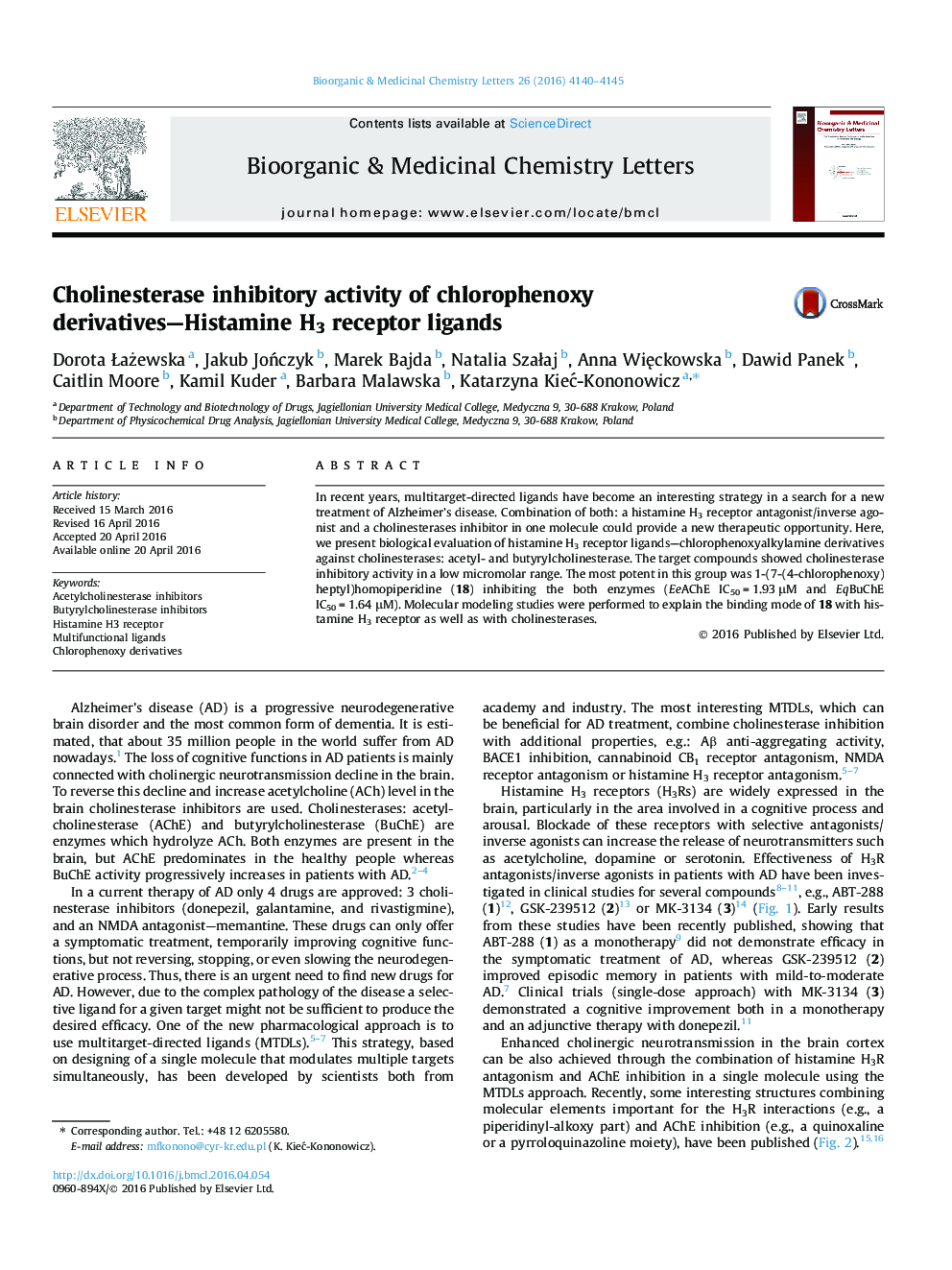| Article ID | Journal | Published Year | Pages | File Type |
|---|---|---|---|---|
| 1369760 | Bioorganic & Medicinal Chemistry Letters | 2016 | 6 Pages |
In recent years, multitarget-directed ligands have become an interesting strategy in a search for a new treatment of Alzheimer’s disease. Combination of both: a histamine H3 receptor antagonist/inverse agonist and a cholinesterases inhibitor in one molecule could provide a new therapeutic opportunity. Here, we present biological evaluation of histamine H3 receptor ligands—chlorophenoxyalkylamine derivatives against cholinesterases: acetyl- and butyrylcholinesterase. The target compounds showed cholinesterase inhibitory activity in a low micromolar range. The most potent in this group was 1-(7-(4-chlorophenoxy)heptyl)homopiperidine (18) inhibiting the both enzymes (EeAChE IC50 = 1.93 μM and EqBuChE IC50 = 1.64 μM). Molecular modeling studies were performed to explain the binding mode of 18 with histamine H3 receptor as well as with cholinesterases.
Graphical abstractFigure optionsDownload full-size imageDownload as PowerPoint slide
